Some Like It Hot + Train Charcuterie
The cheese and cocktails on the set of the Marilyn Monroe classic...
Some Like It Hot (1959) Film Flavor Review
Film Review: ★★★★★
Food Review: ★★★½
Part One | Food Review | No Crackers In Bed!
Set in the 1920’s prohibition era, Some Like It Hot has no shortage of alcohol consumption. From the very first scene, we see the inner workings of routine booze smuggling on full display as we watch musicians Joe (Tony Curtis) and Jerry (Jack Lemmon) play in a band performing for speakeasy patrons.
After our protagonists accidentally become the mob’s next targets, they quickly disguise themselves as women, join an all-female band, and skip town. The men must keep up their gender charade in order to stay alive, but their crushes on the band’s singer (Marilyn Monroe’s Sugar) put their cover in jeopardy.
In one of my favorite scenes, the disguised men are piled into the sleeping car of an overnight train with the rest of their lady bandmates. Jerry’s desires for Sugar take over, and he begins handing her shots of whiskey to prime her for a shocking gender reveal. Before Jerry can put the moves on, the rest of the band wants in on the party, and the girls pile into the cramped bunk with vermouth, cheese, crackers, and salami.
Or so they claim…
That’s right, dear reader. I went down a deep, dark rabbit hole to uncover the truth (*a.k.a. my educated guesses, see disclaimer below), behind this makeshift, on-the-go charcuterie cocktail hour.
Did I discover how you can make the Some Like It Hot cocktails and cheeseboards at home? Of course! But I must warn you, the revelations herein are shocking.
You may cry, you may laugh, but you may also walk away with the perfect holiday gifts for the cocktail and charcuterie lovers in your life.
Disclaimer: Film Flavor is a newsletter written for entertainment purposes only. While I do my best to write meaningful posts with good intentions and cite sources when I have the bandwidth, I do not have the capacity nor the expertise to fact-check research as a trained professional journalist would. Despite my best efforts, the Film Flavor newsletter may contain omissions, errors, or mistakes and cannot be relied upon for accuracy or correctness. Additionally, I am not a chef, doctor, nutritionist, or food professional, and it is the responsibility of the reader to consult qualified professionals and use good judgement to decide whether the ingredients, foods, drinks, recipes, and cooking instructions mentioned within Film Flavor are safe to use, follow, or consume. The Film Flavor newsletter does not contain any professional advice or guidance and its contents should not be considered as such. Read the full Film Flavor disclaimer on the Film Flavor About Page, here. Thank you!
The Crackers
Who doesn’t love a midnight snack of cheese and crackers? Even Jack Lemon who yelps “No crackers in bed!” only does so because he wants a moment alone with Marilyn Monroe.
When the tin of crackers in brought out, the tin has a clear, unique pattern visible on the side, almost resembling diamond or square shapes. I’ve deduced that the tin is none other than one of ROKA’s Cheese Crispies Cracker Tins.1
The food manufacturer ROKA was founded in 1949, so this does somewhat shatter the illusion that Some Like It Hot is taking place in the 1920s.
Disconcertingly, the actual crackers being eaten on screen do not appear to be Cheese Crispies at all, but regular old saltines, which were a popular snack in the 1920s.
I suspect the set dressers imagined the minor character in possession of these salty snacks was keeping on-the-road durability in mind, habitually refilling the fancy Cheese Crispies tin with cheap saltines, thereby maintaining her charcuterie stash on a traveling musician’s budget. The use of saltines also suggests this scene was shot many times, and saltines were easier to get and consume en masse for the celluloid than other crackers.
Some Like It Hot Charcuterie Cocktail Hour Recreation Suggestion #1: Skip the saltines and spring on Roka’s Cheese Crispies, which are available via Amazon and local grocers to this day. For decor, consider purchasing a vintage tin off Ebay.
The “Cheese Spread”
First off, I need to acknowledge that this jar of “cheese” took what was left of my sanity, and I now have but a shell of a brain.
Now, in the film’s first shot of this godforsaken glass jar of enigmas, it is clearly a 1950’s jar of Kraft’s Cheez Wiz. From my research, I don’t believe Kraft sold this product in the 1920s, but Kraft did sell a cheese spread in a jar at the time, so I’ll allow it.
In fact, spreadable cheese in a jar was such a new product in the 1920s that some of the only proof that Kraft produced it is in the form of advertisements, like this reproduction currently up for sale on Etsy.
To be quite frank, “Cheez Wiz” strikes me as a decidedly 1950s food product, and the set dressers may have agreed, because they SWAPPED IT OUT in the next shot.
As the spreadable cheese travels up the little ladder and into the famous top bunk party, the jar is swapped out for a jar with the word “creamy” emblazoned on the lip of the metal lid.
For the life of me, I cannot find a single vintage mass-produced cheese or cheese-like spread jar with the word “Creamy” legible on the edge of the lid in the fashion shown on screen in Some Like It Hot.
I did notice, however, that almost every major brand of peanut butter in the late 1950s had the word “creamy” clearly legible on the edge of the lids of their creamy varieties. Combined with the full color, behind-the-scenes photographs showing the jar’s teal and white label, it’s clear they are holding a jar of skippy peanut butter circa 1950s.
I cannot bold the statement above enough. After hours of searching, my jaw was on the floor, irretrievably.
Now, in the film, we do hear one woman mutter “Pass me the peanut butter” in the background. At this point in the film, only the Skippy jar is visible, nary a cheese spread in sight. To the view, it seems as though the cheese spread has morphed into a jar of Skippy’s before our eyes. Timelines switched. The Berenstein bears are now the Berenstain bears. Chaos is chaos. Only the now exists.
(Oddly, the only versions of this jar with the “creamy” lid lip text are accredited to the 1960s, but since this film was shot in the late 1950s, and since I doubt anyone at Skippy HQ would answer my emails in time for me to get this post out, I’m going to end this madness here.)
Again, it seems that instead of simply getting a true vintage jar of 1920s Kraft cheese or pre-war peanut butter, the production team went to great lengths to hide this Skippy jar’s modern 1950s nature. (Skippy — the first mass produced, ready-mixed, hydrogenated peanut butter brand — was not available to consumers until the 1930s.)
Ultimately, those lengths proved not great enough. Little did they know the internet would come along and give birth to the sleuth that is the woman behind Film Flavor, who has way too much time on her hands and a penchant for hunting down obscure snacks.
Some Like It Hot Charcuterie Cocktail Hour Recreation Suggestion #2: Nostalgic eaters can pick up a jar of Kraft Cheez Whiz, or one of their more palatable jars like this Pimento. Naturally, as a vegan, I would be remiss if I didn’t tell you there is a better way: Might I suggest this plant-based lemon rosemary spread?
The Salami
Thank goodness for the Buon Gusto Salami, which looks like it has been manufactured in San Francisco since 1917 and, to my trained eye at least, appears in Some Like It Hot in the shot pictured above. We’re back in the correct time period, baby!
Some Like It Hot Charcuterie Cocktail Hour Recreation Suggestion #3: Now seemingly owned by Columbus Craft Meats, Buon Gusto sausage-seekers can purchase a variety pack of salami here. If you’re looking for that classic wrapper featured in the film, you will have to spring for the jumbo version at your local delicatessen.
The Cocktails
In the film, Sugar makes Manhattans — If you count bourbon and vermouth mixed in a hot water bottle as Manhattans.
After a little digging, it appears the paper cups used are vintage Lily paper dixie cups circa, you guessed it, the 1950’s. (Pictured as #6 below. Vintage cups with a slightly larger logo are available for purchase on Ebay.)
I did try to find the bottles featured but we must keep in mind:
Some Like It Hot is set in the Prohibition era in the United States, in which alcohol consumption was made illegal and any bourbon bottle would have likely been labeled as anything but
Given the lack of historical accuracy implemented by the set dressers in the makeshift charcuterie described above, I was less than hopeful these bottles were from anytime but the 1950s.
And so, my recommendations are as follows:
Some Like It Hot Charcuterie Cocktail Hour Recreation Suggestion #4: Mix Manhattans with heritage branded bottles, such as 1 Weller Special Reserve Bourbon and 2 Martini & Rossi Sweet Vermouth. If you’re not on an Amtrak, you could even spring for 3 Angostura Bitters and 4 some fancy Italian cherries to top your cocktails off. If you are on a train, consider mixing your drink in a nice 5 hot water bottle.
(If you need a gift idea for the alcohol-consumer that has everything, you cannot go wrong with those cherries.)
Interestingly, through my reading for this piece I learned mixed drinks of the roaring ‘20s were “designed to mask the often overwhelming flavor of illegally distilled liquor,” per my new favorite publication, Culture Cheese Magazine. “In the 1920s… finger foods — like the cheese ball — were favored as a sensible way for guests to enjoy their alcohol throughout an evening of partying without becoming too conspicuously sloshed.”
Much of the 1920s were arguably defined by the balance of devil-may-care attitudes and affinities for cheese in unsavory forms. And by that logic, maybe the Cheez Wiz is a more fitting prop than any true vintage ‘20s cheese could ever be.
Part Two | Film Review | Isn’t It Ironic?
As one of the most famous pre-1960s comedy films, Some Like It Hot went against the growing technicolor grain and was shot in black and white. The reasoning? Debatable. You’ll often hear it blamed on the drag makeup stars Jack Lemmon and Tony Curtis wore, which was rumored to have a “sickly green tint” that couldn’t be fixed with the makeup or film stocks of the time. You’ll also hear that director Billy Wilder hated color and pretty much resisted it until the late ‘60s.
All potential factors, but here’s the real kicker: Wilder biographer Maurice Zolotow suggests Wilder was afraid of the film looking too… “flamboyant”2 next to the already-flamboyant nature of cross-dressing. In Zolotow’s words, “Wilder was afraid that men masquerading as women would look cheap.”
While that may sound awful to today’s ears, we must keep in mind two points
As a writer and director, Billy Wilder was but a worker of Hollywood to a certain degree, and had to make sure his actually quite groundbreaking film would sell tickets and be seen by audiences without causing a riot. (Oh, and did I mention one of the films Some Like it Hot is based off of, Fanfare of Love allegedly has the characters in blackface? I think Billy and co-writer I.A.L. Diamond did us all a favor there.)
Wilder wanted the performances to be funny. Wilder’s general thought process seems to be: Watching a man do a poor job at pretending to be a woman — highlighting men’s lack of knowledge about women in general — is funnier than watching a man do a very good job at pretending to be a woman. Wilder even hired Barbette, a famous “female impersonator” of the day, to train actors Tony Curtis and Jack Lemmon to impersonate women… poorly.
“Billy told Barbette that he shouldn’t make us too convincing,” Curtis wrote in his memoir The Making of Some Like it Hot: My Memories of Marilyn Monroe and the Classic American Movie (2009). “Billy wanted us to look like we were trying hard but not quite getting it, at least from our point of view… If we took to it quickly, we’d be suspect, not funny.”
In the 1950s, the 1920s were regarded as times of social, sexual, financial liberation and precariousness. Sure, the cross-dressing antics of Joe/Josephine and Jerry/Daphne are absurd against the background of the ‘20s. But to a 1950s viewer, those antics would have been unconscionable set in the Eisenhower era. With Some Like It Hot, Wilder is poking fun at the audience of his era, asking, “What’s the big deal?”
While the terminology used by Wilder and his peers to refer to LGBTQ+ folks is offensive to the modern ear, Some Like It Hot’s themes were both disruptive and key to the comedy at play.
And comedic it is. I try and watch this film once a year, and it still makes me cry from laughter every time. One of the funniest pre-1970s films, beloved by millions, Some Like It Hot can still hold the attention of someone who hasn’t never seen a black and white movie before. The performances are key, the costume and set design is fantastic, the editing is fast-paced and ahead of its time. But the script, flamboyant or not, is one we will be studying for centuries to come.
Needless to say, Some Like It Hot’s famous final line “Nobody’s perfect!” is fitting in more ways than one.
Some Like It Hot is cited as a breaking point in the downfall of the Motion Picture Production Code, or Hays Code; the movie industry self-censorship guidelines that were enforced by what is now the MPAA (the people who give our films ratings such as “PG-13” and “R” today.) The code, which was created to clean up Hollywood’s “immoral” image, was very strict; Featuring any cross-dressing or homosexuals was considered “sex perversion” and banned. Participation was voluntary by the studios, and forced upon any filmmaker who wanted to work with them.
After years of austere and chaste film production, which practically banned half of Shakespeares works, filmmakers were getting antsy. In 1959, the code became more flexible, allowing films to “deal with pretty much any topic but homosexuality.” And code-approved or not, the floodgates opened.
Clearly, the independently-produced Some Like It Hot was made without any regard to said code and still went on to become a hit. The code began to fall out of fashion along with its strict, bigoted ideals. By 1968 the Hays Code — now impossible to enforce — was abandoned.
And so, herein lies the story of a film that tried not to be flamboyant, and incidentally paved the way for some of the most risqué LGBTQ filmmaking of today. (Hit it, Alanis Morissette… for you may not have a firm grasp on the definition of irony, but you do know how to write a fitting tune.)
Just as we love Alanis Morissette’s hit song and our own significant others, we love Some Like It Hot even with it’s imperfections.
I will leave you with but a still from the film’s most memorable food moment.
Disclaimer: Film Flavor is a newsletter written for entertainment purposes only. While I do my best to write meaningful posts with good intentions and cite sources when I have the bandwidth, I do not have the capacity nor the expertise to fact-check research as a trained professional journalist would. Despite my best efforts, the Film Flavor newsletter may contain omissions, errors, or mistakes and cannot be relied upon for accuracy or correctness. Additionally, I am not a chef, doctor, nutritionist, or food professional, and it is the responsibility of the reader to consult qualified professionals and use good judgement to decide whether the ingredients, foods, drinks, recipes, and cooking instructions mentioned within Film Flavor are safe to use, follow, or consume. The Film Flavor newsletter does not contain any professional advice or guidance and its contents should not be considered as such. Read the full Film Flavor disclaimer on the Film Flavor About Page, here. Thank you!
Already subscribed? Click below to share today’s flavor:
All food-identifications listed in Film Flavor are just my guesses, my shots in the dark. Big Peanut Butter, please don’t come after me.
I actually cannot repeat the exact homophobic phrasing in type here for obvious ethical reasons, but you can read at the Internet Archive for free on page 201 of Billy Wilder in Hollywood by Maurice Zolotow, 1977.


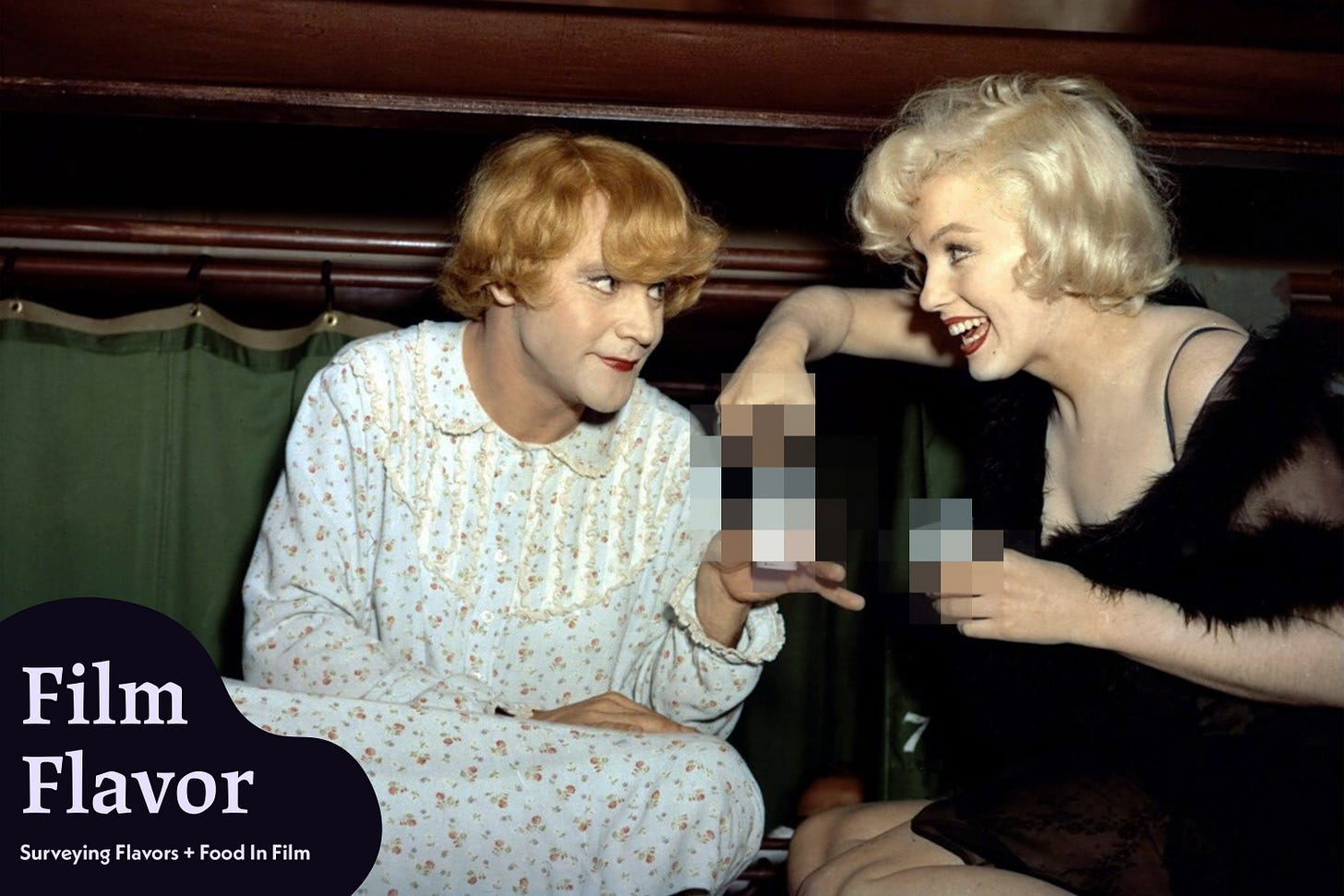
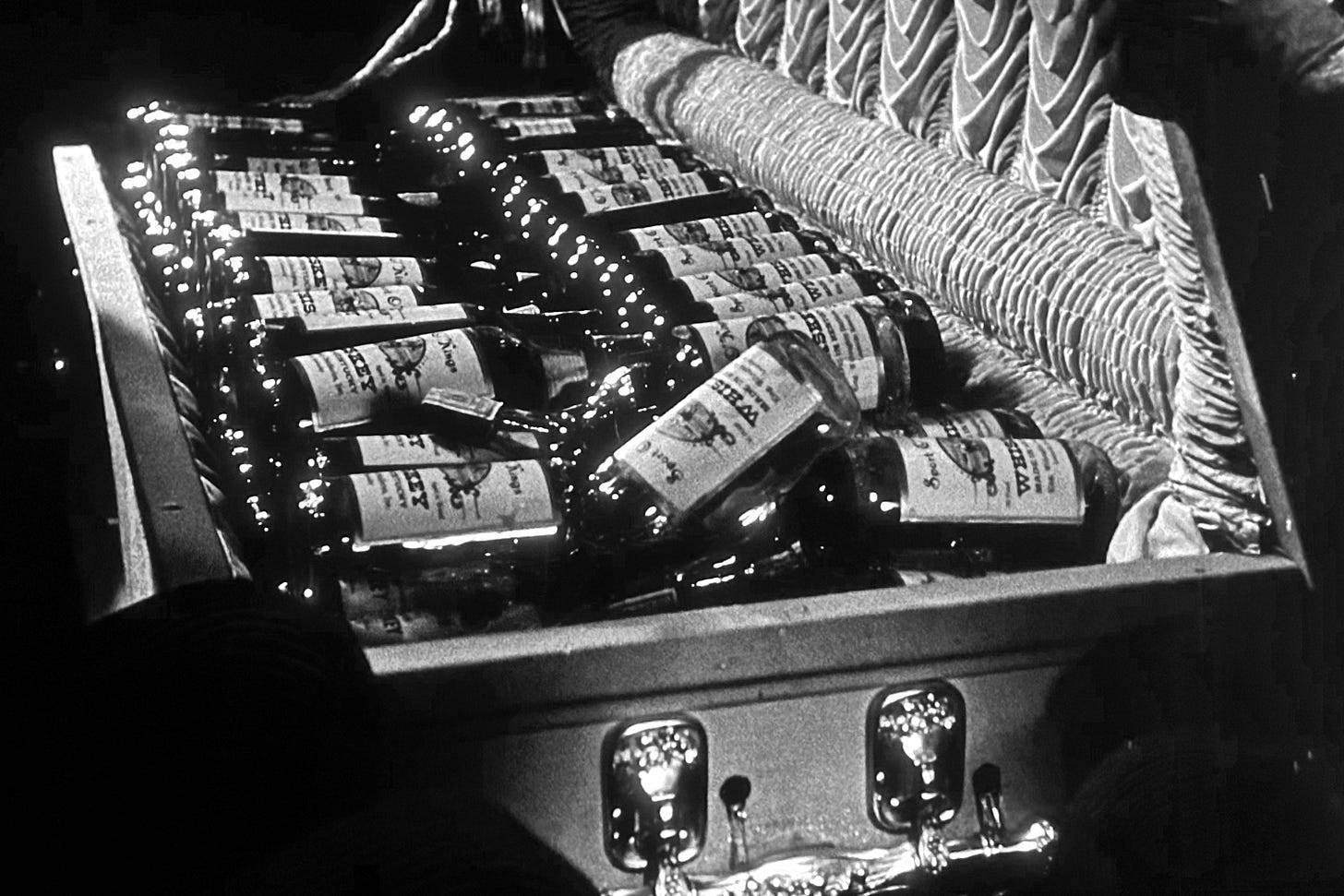
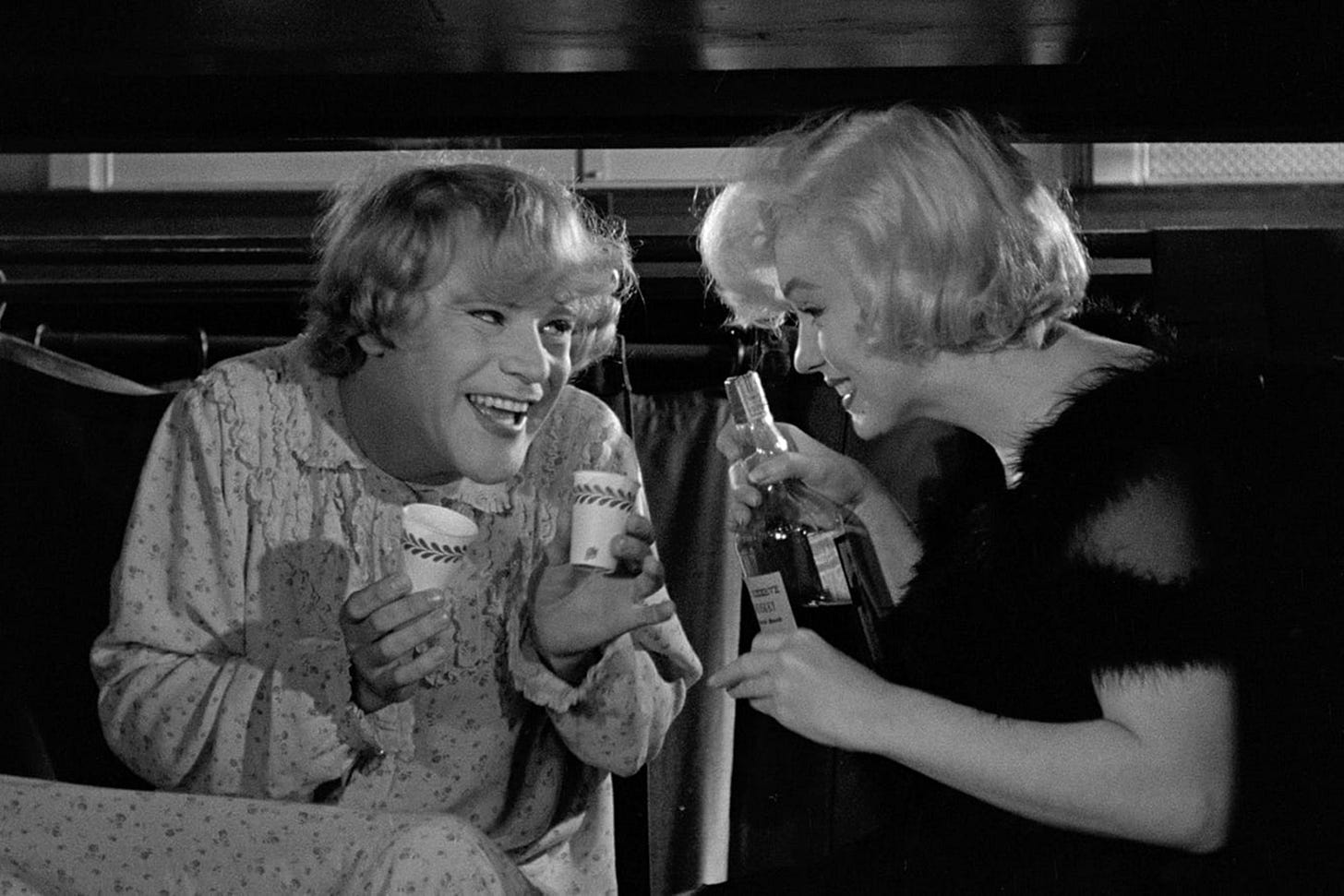
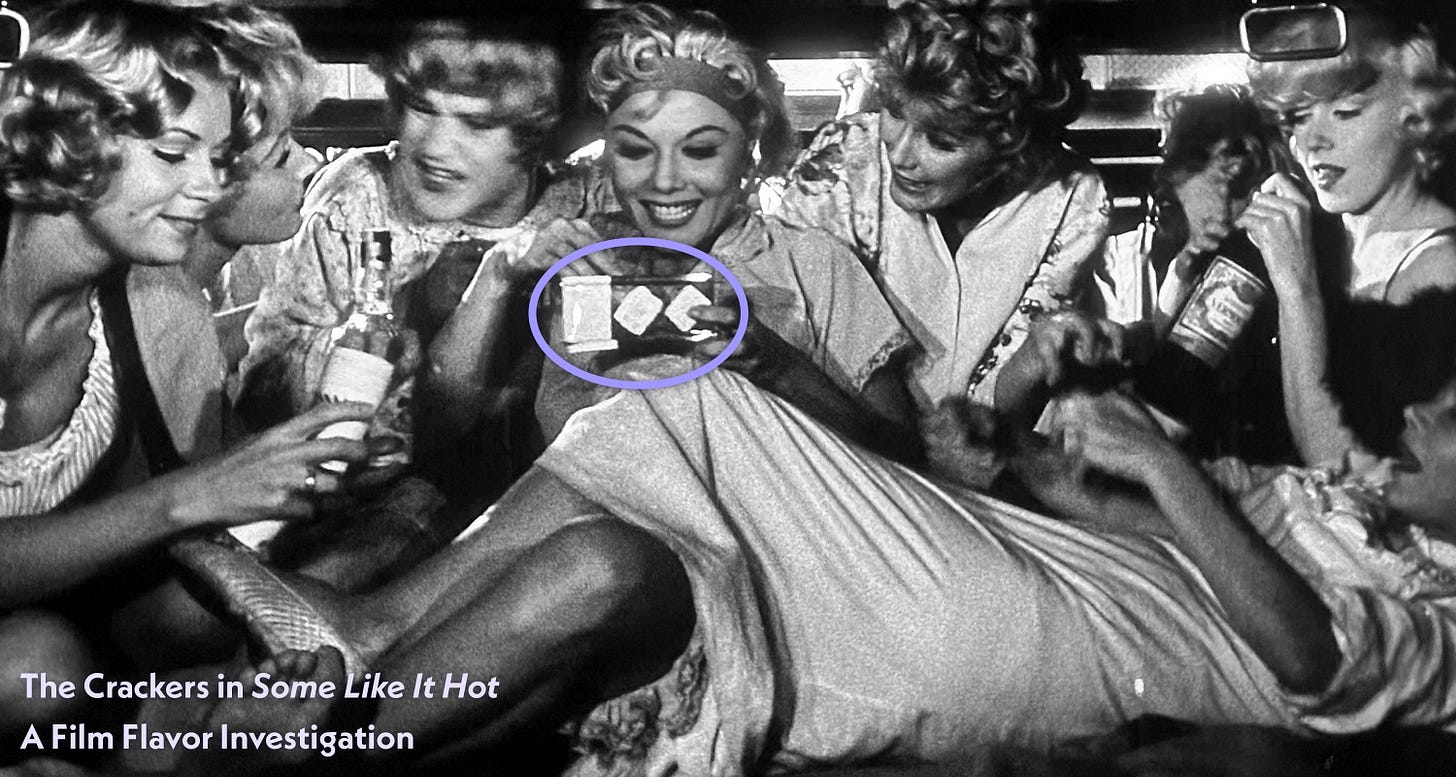
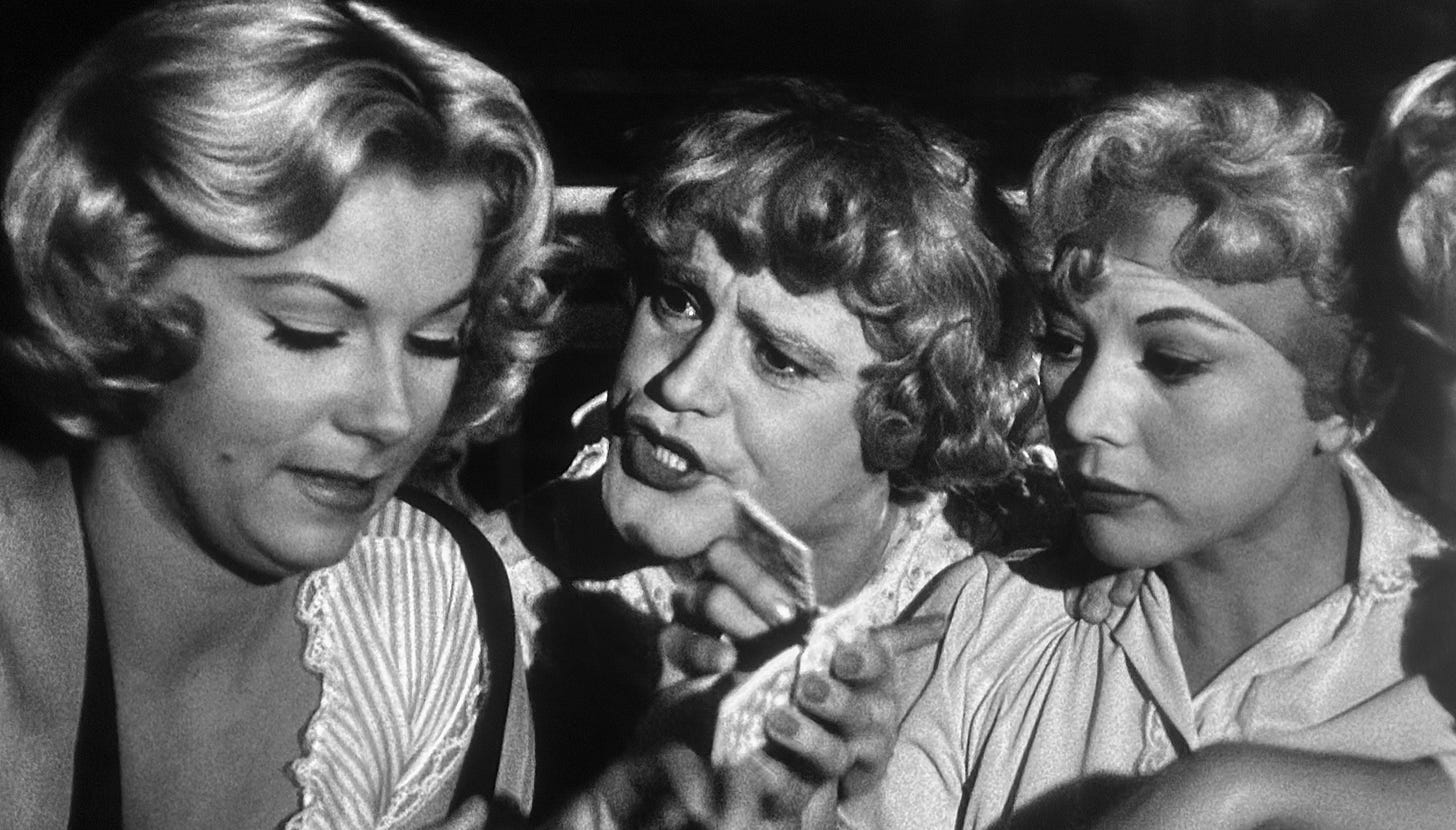
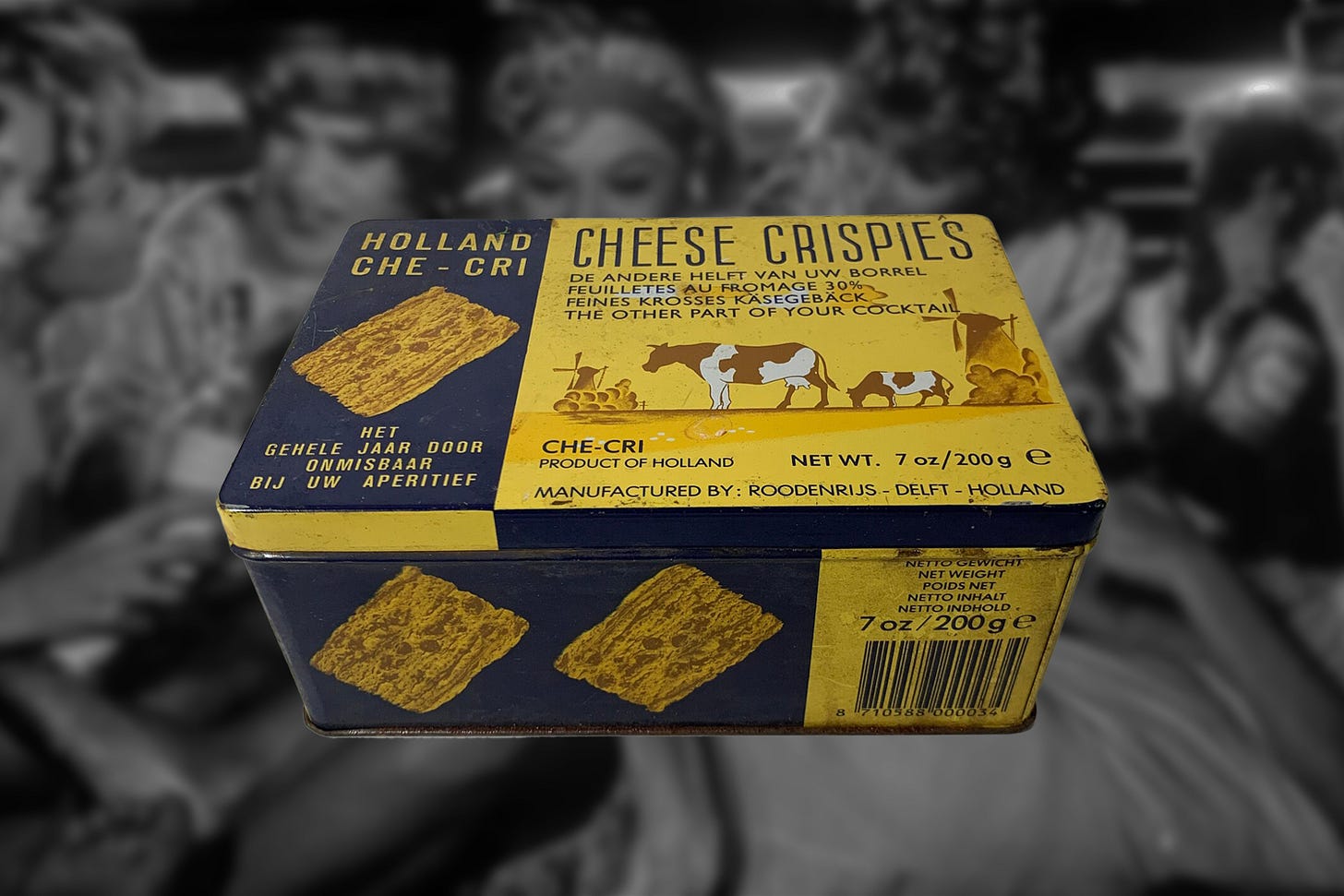

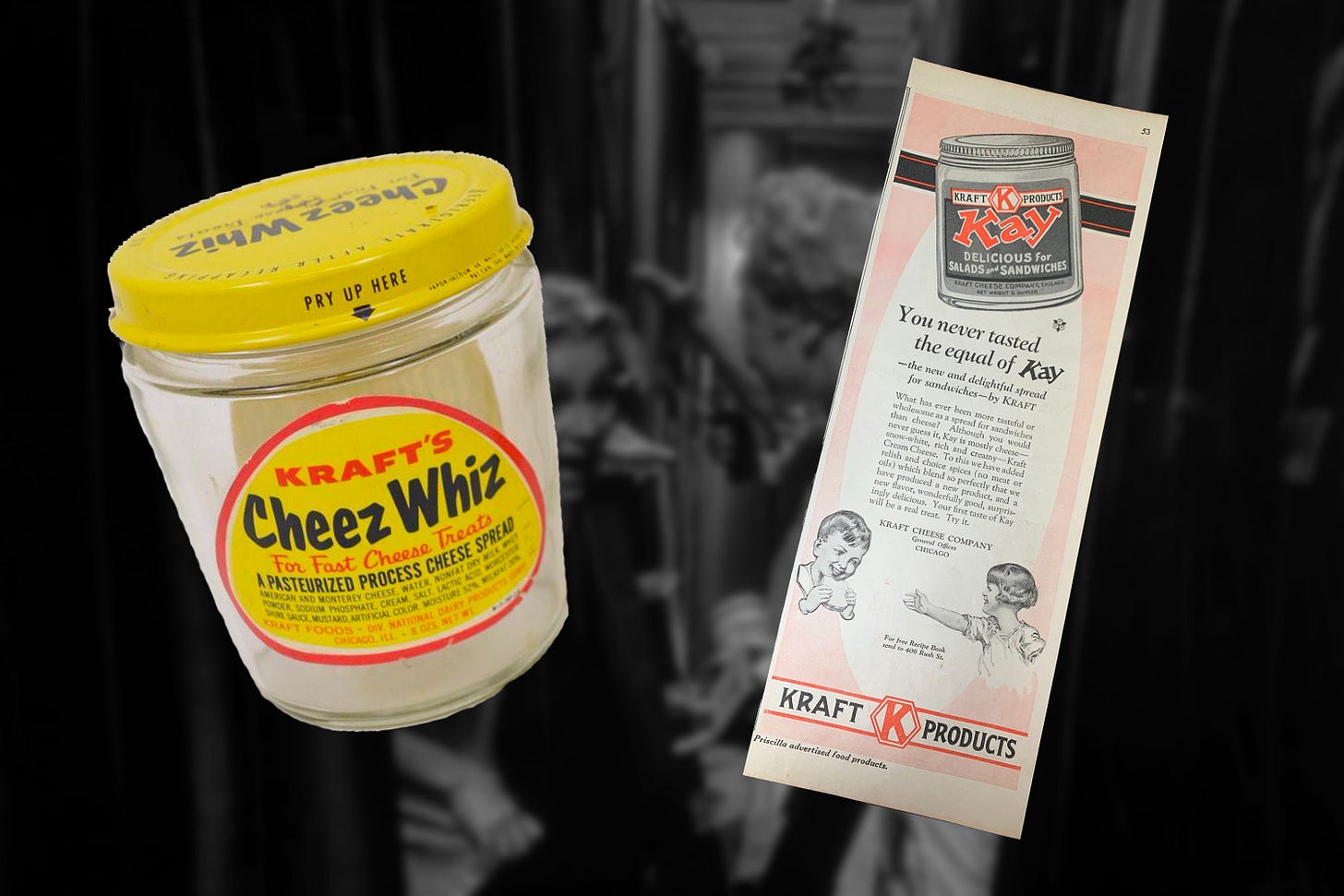

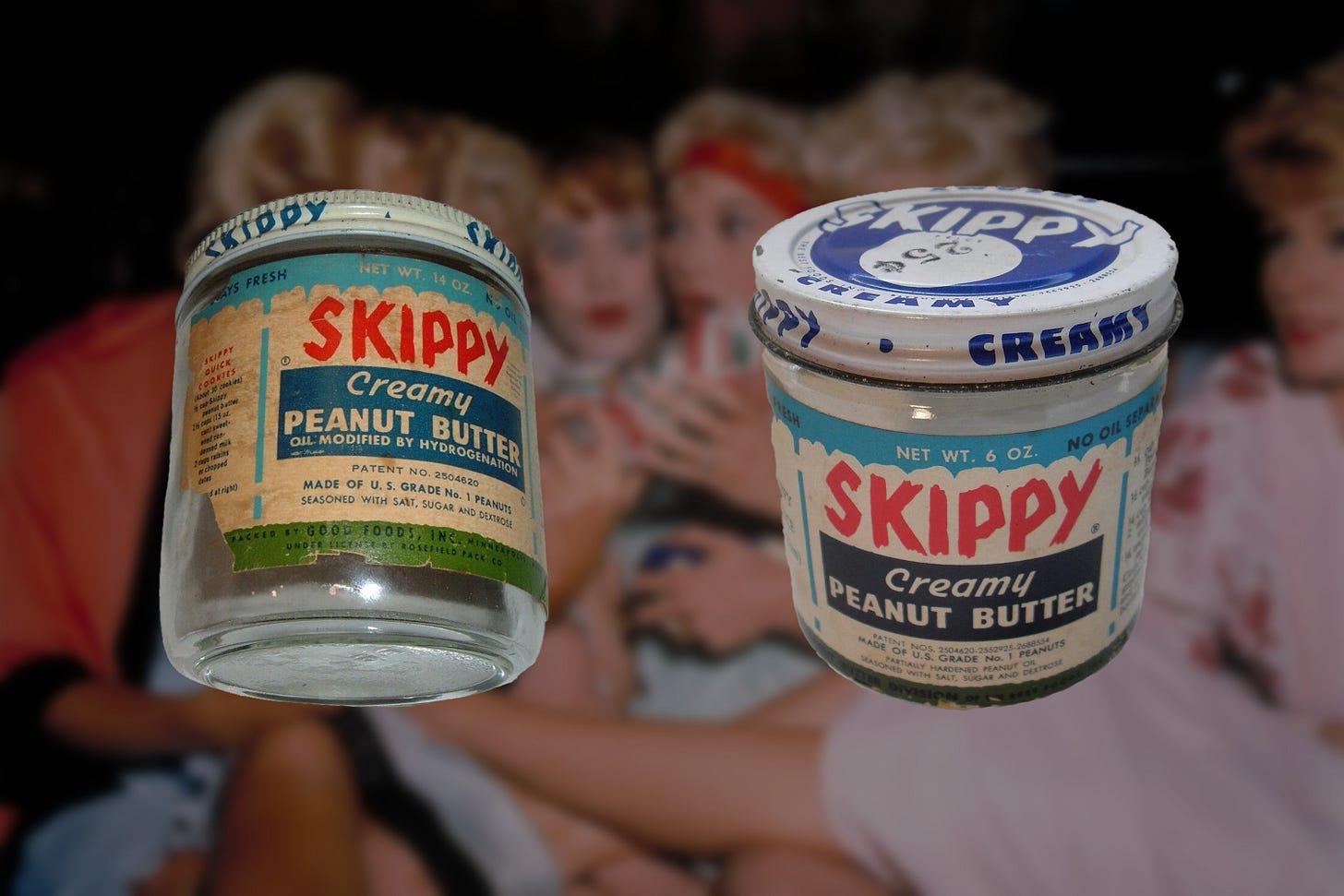
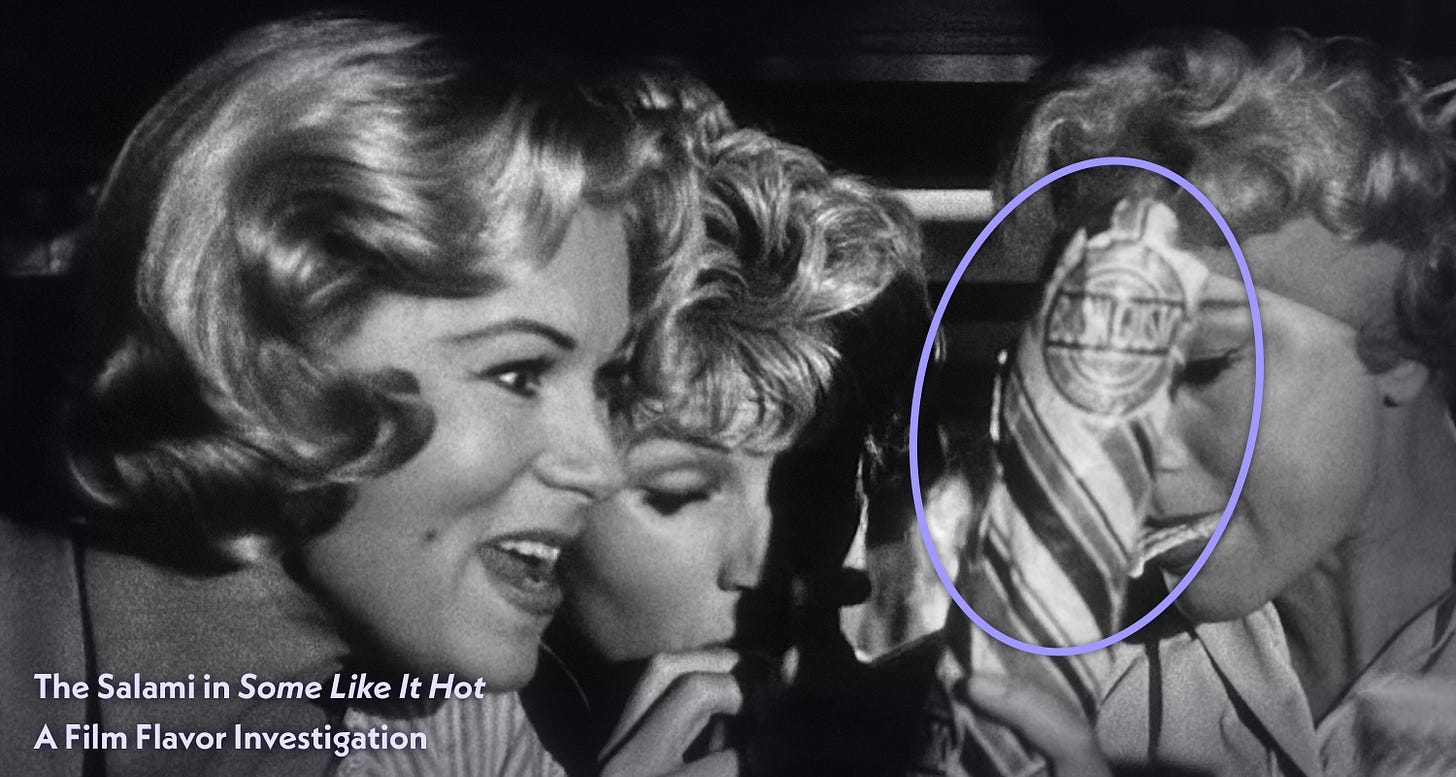
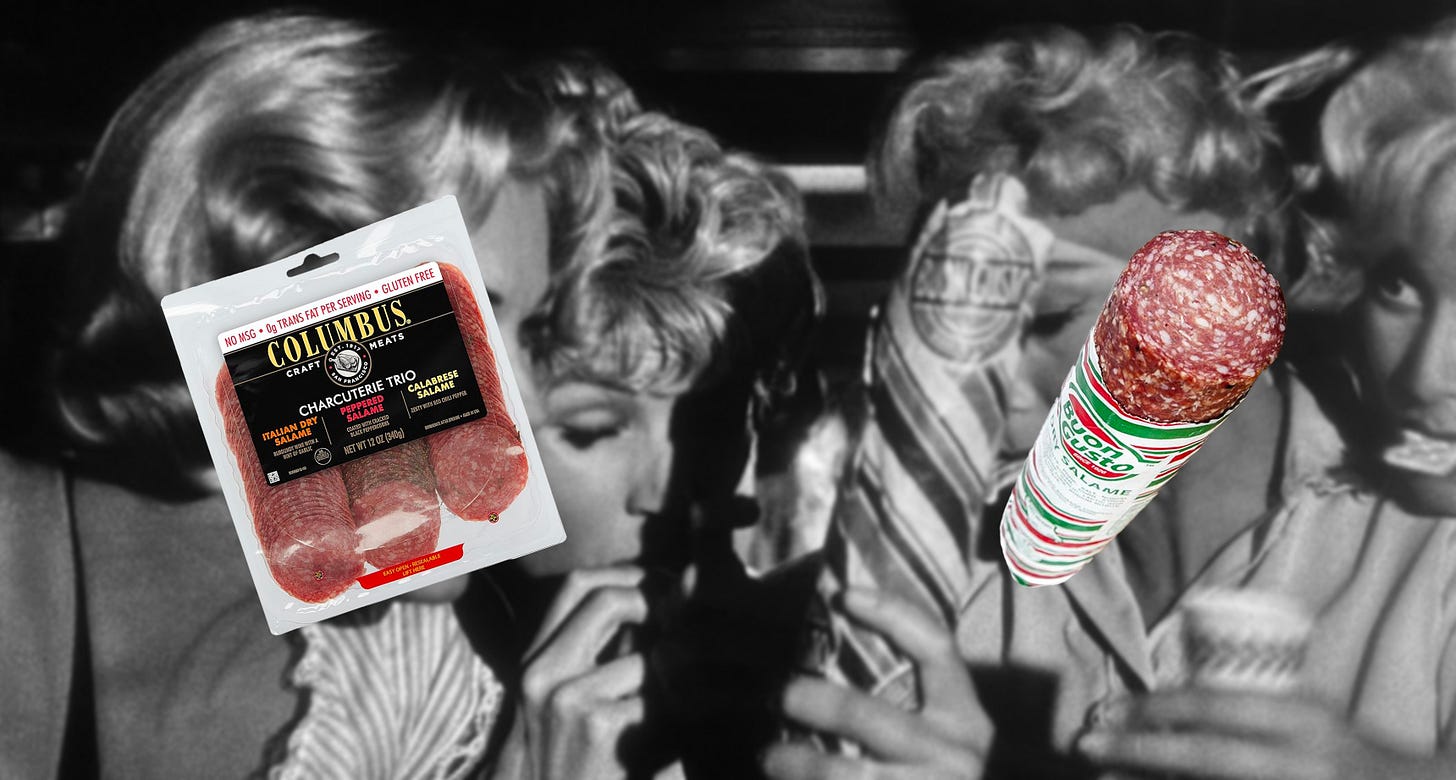
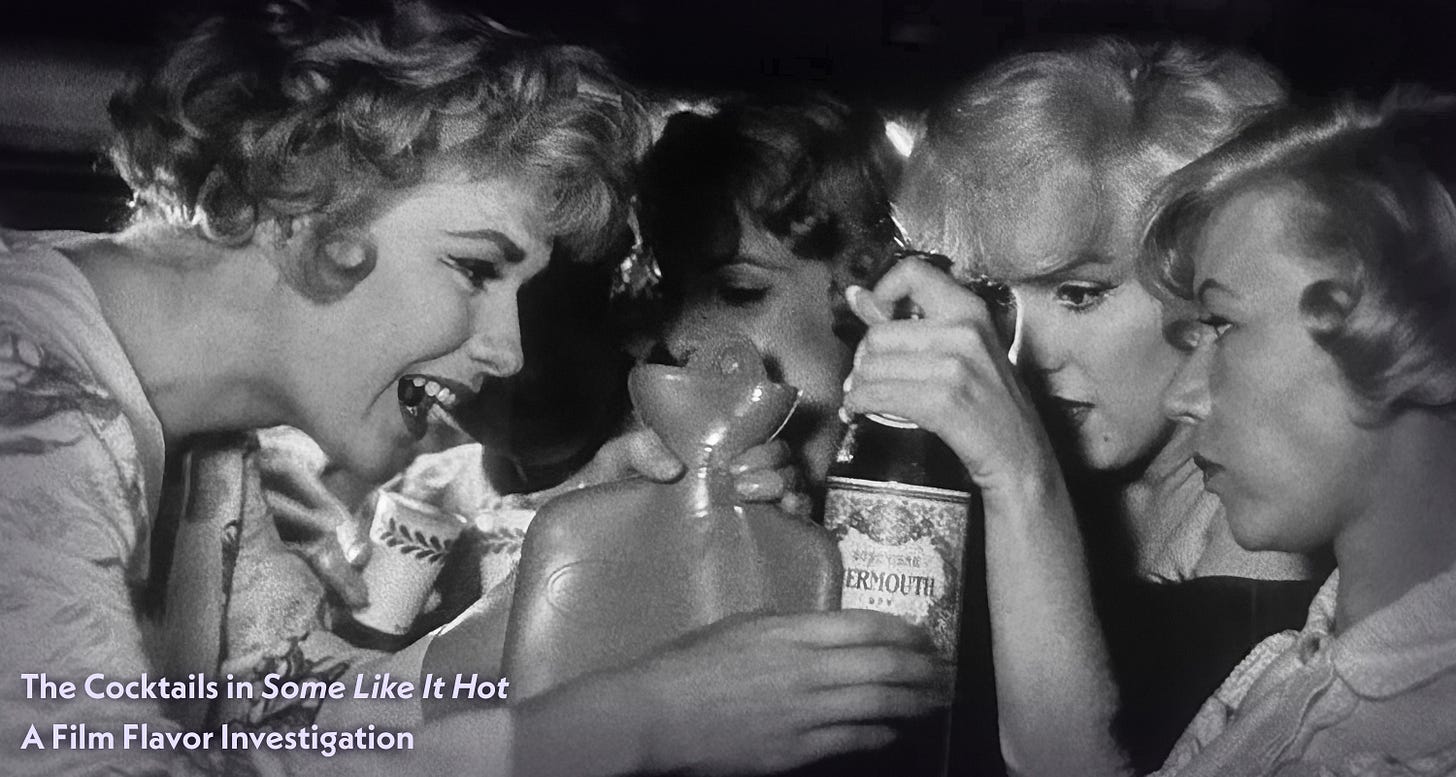
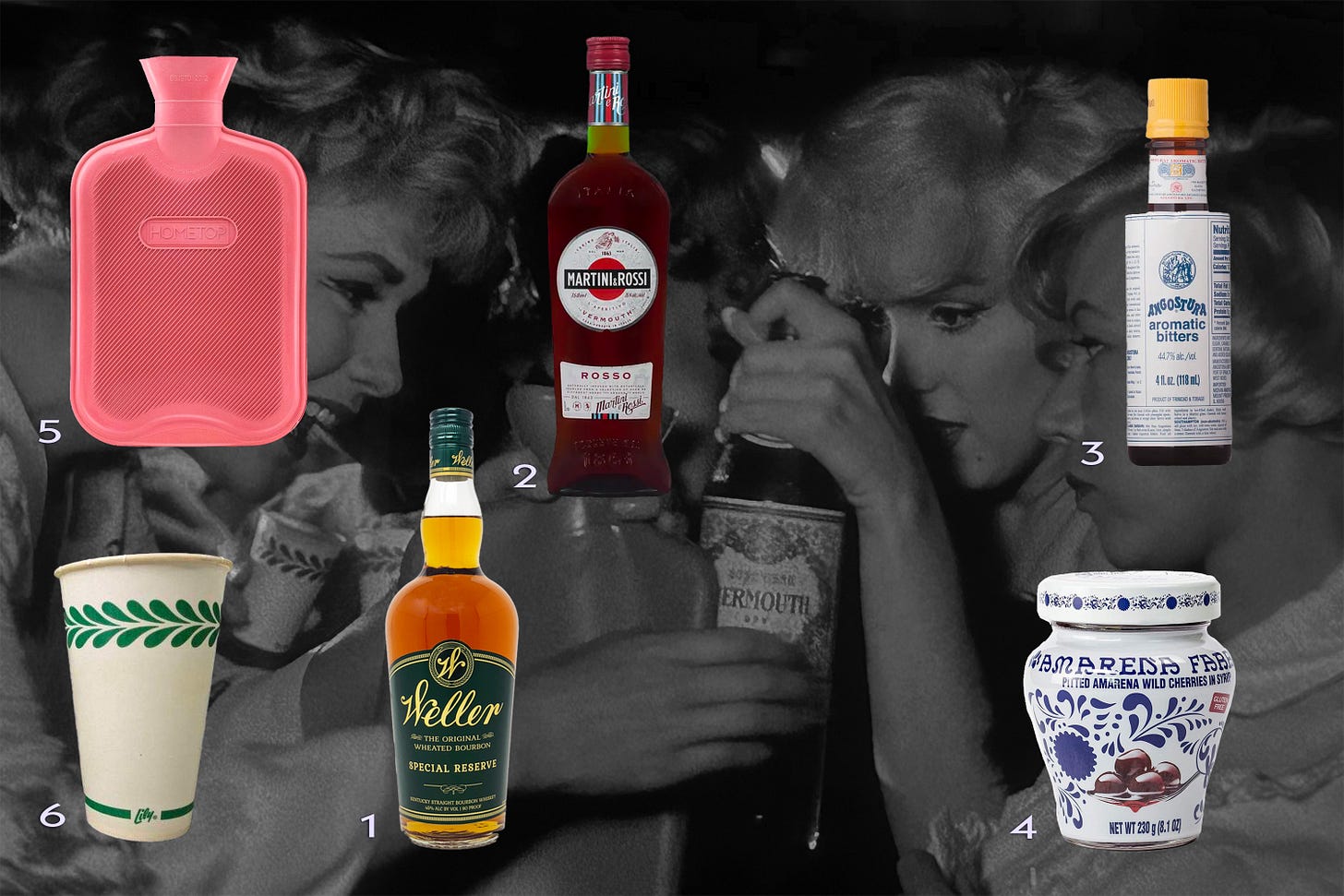
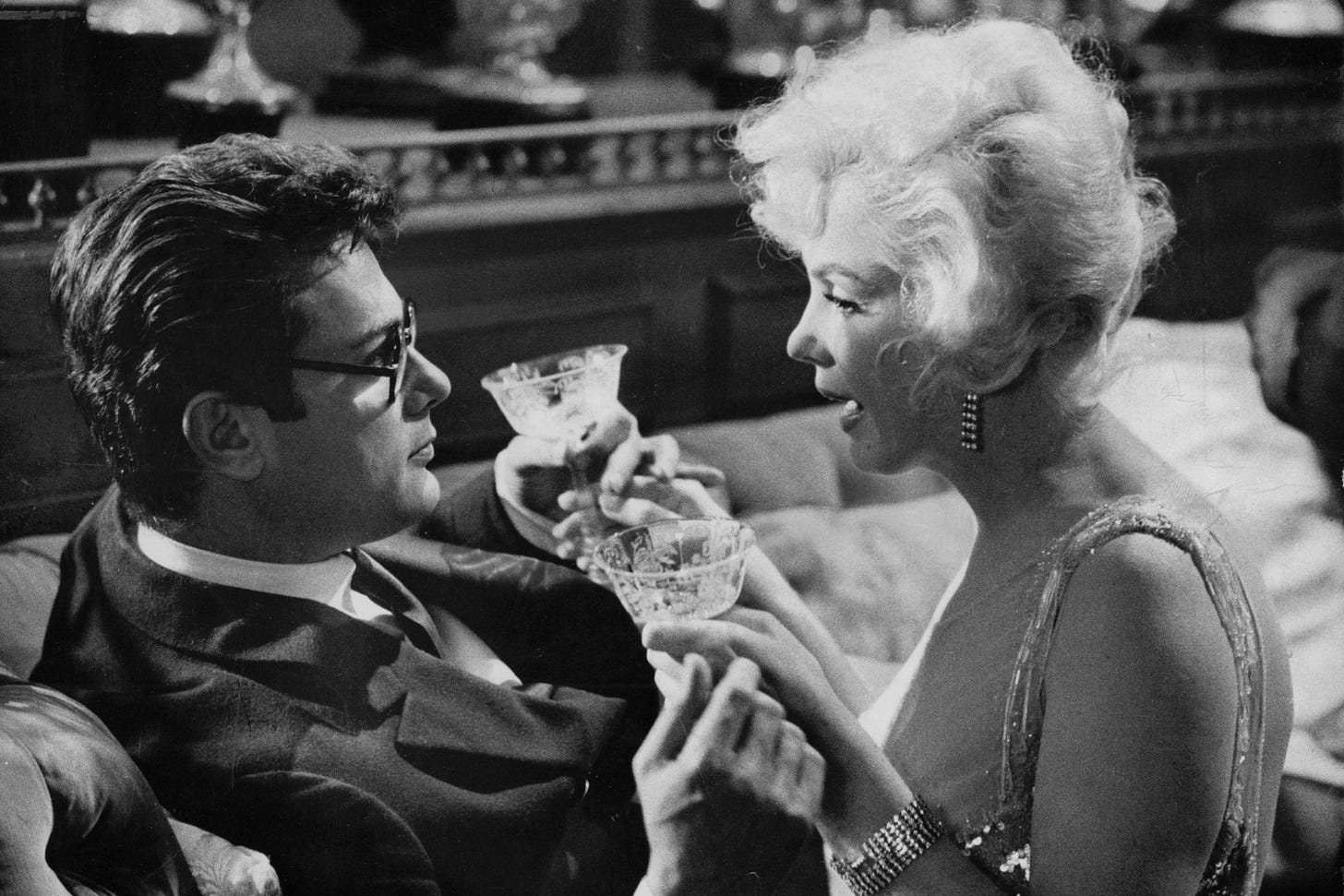
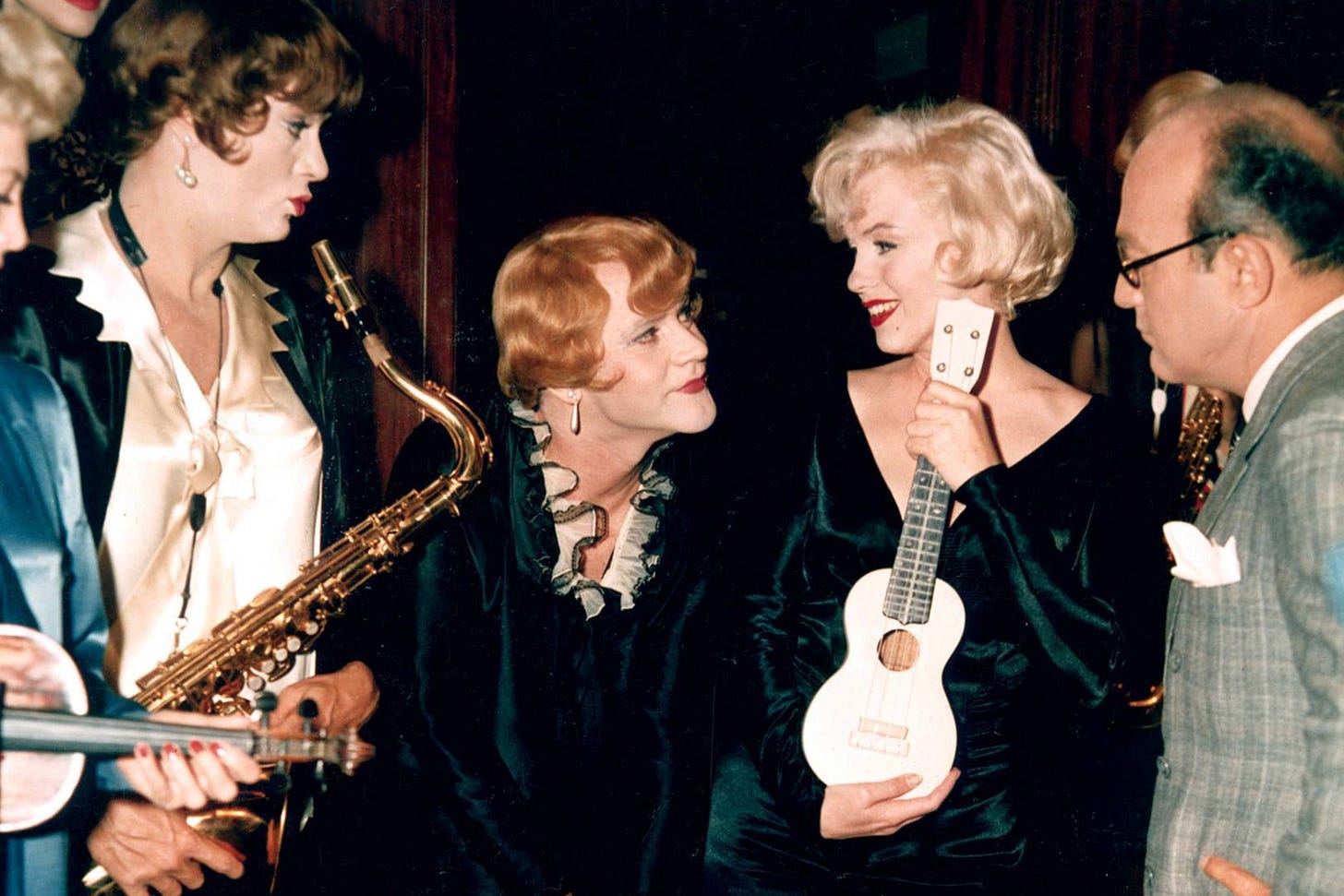
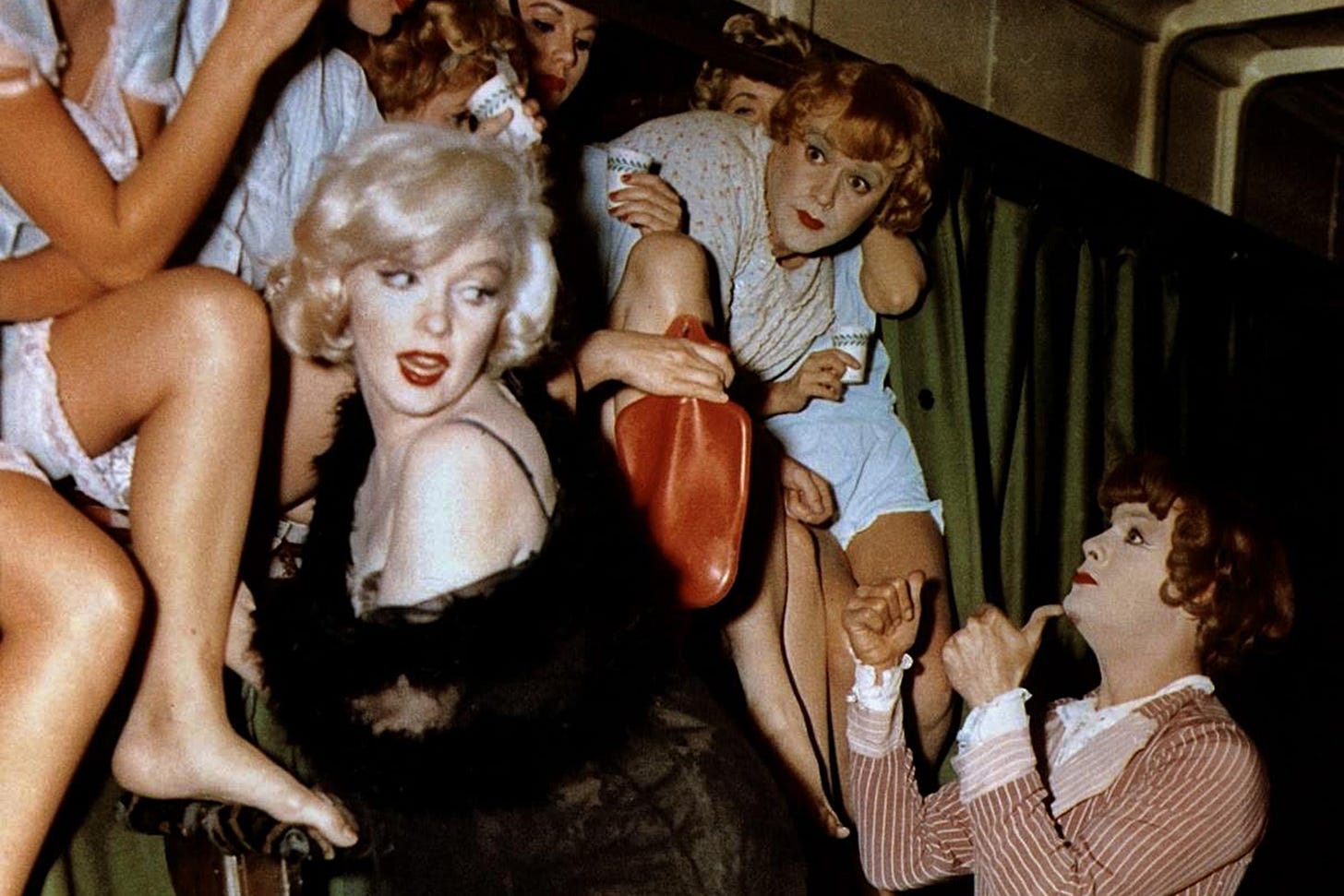
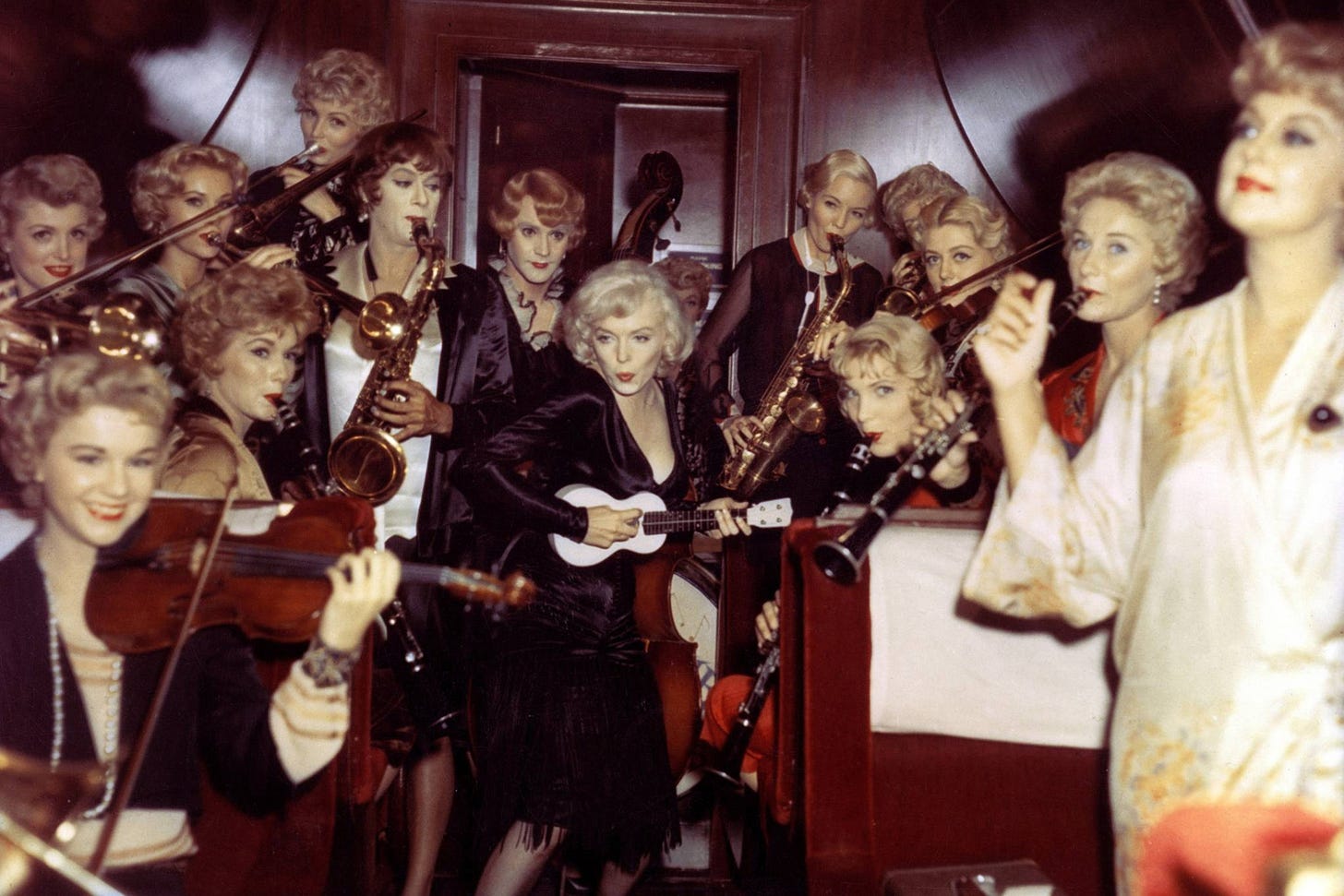
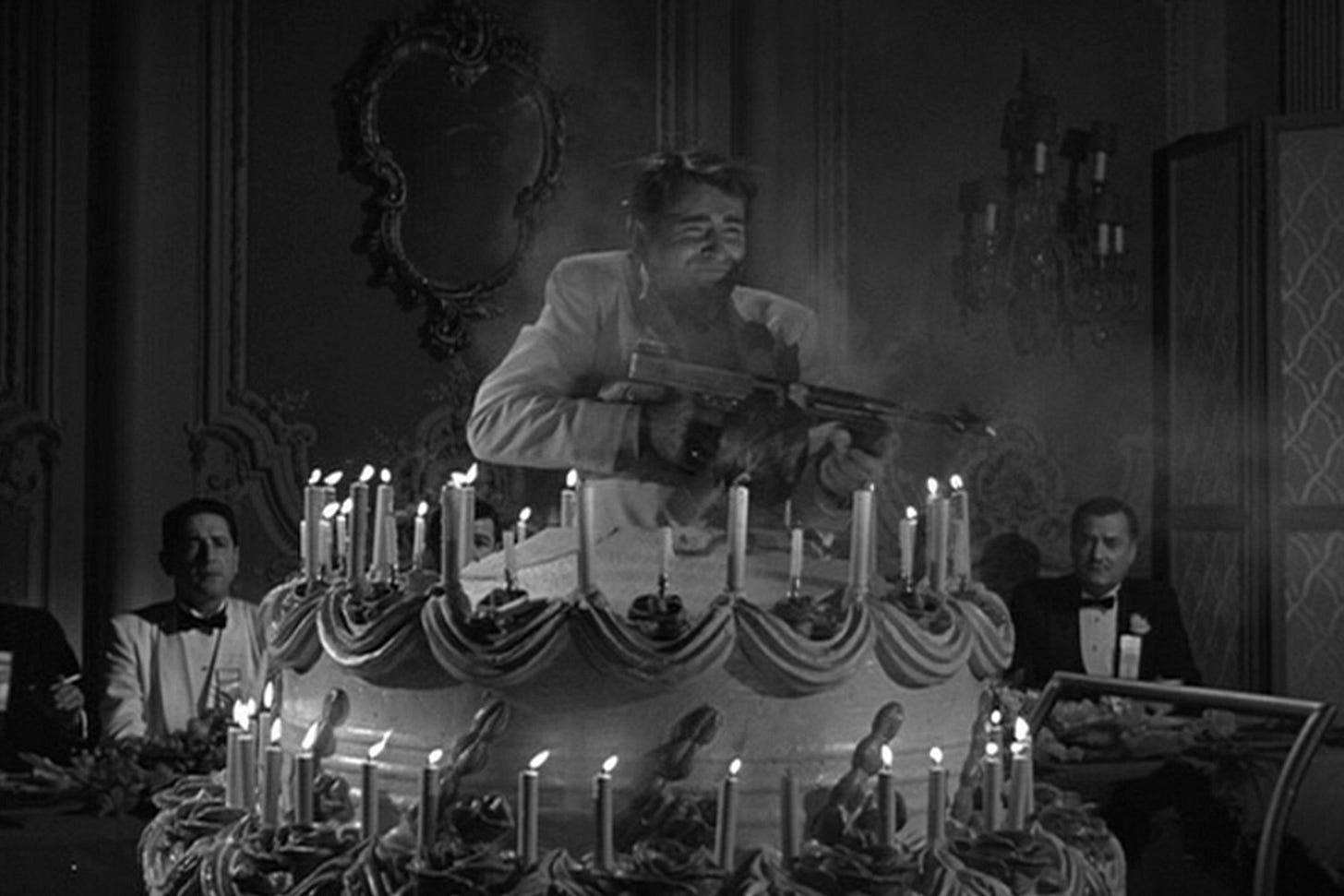
I have to try those cheese crispies now
The blurred cover photo is too good! xD